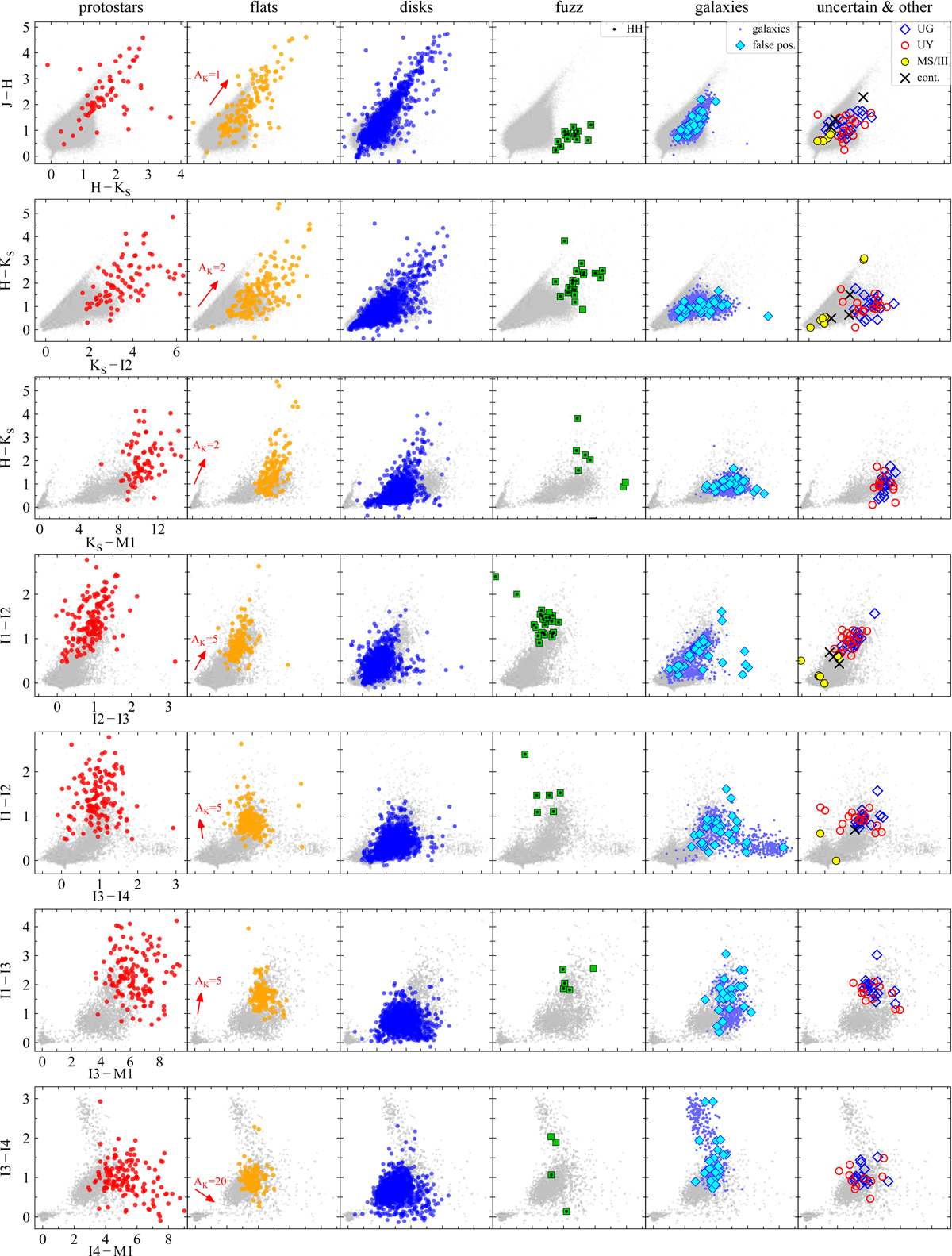Fig. 3.

Seven selected color–color diagrams composed of VISTA and Spitzer photometry, showing YSO candidates and false positives. Gray dots represent all sources toward Orion A with errors < 0.2 mag for the given bands. From left to right panels we show the three YSO classes, protostars (red), flat-spectrum sources (orange), disk sources (blue); and contaminating objects: fuzzy nebulous contamination (green), galaxy contamination (cyan), and finally other contamination or uncertain objects. These are MS stars or Class III candidates (filled yellow circles), contamination due to image artifacst (black crosses), uncertain candidates (red open circles), and uncertain galaxy candidates (blue open diamonds). In column four showing fuzzy contamination, we highlight Herbig-Haro objects with a black dot, while sources without dot are mostly cloud-edges or other nebulous structures. In column five we show galaxies (blue dot symbols) and previous YSO candidates identified as galaxies (false positives, filled cyan diamonds). This highlights that galaxies often occupy similar color spaces as YSOs, especially the ones previously classified as YSO candidates. However, most tend to be fainter for the distance of Orion A (see CMDs, Fig. 4).
Current usage metrics show cumulative count of Article Views (full-text article views including HTML views, PDF and ePub downloads, according to the available data) and Abstracts Views on Vision4Press platform.
Data correspond to usage on the plateform after 2015. The current usage metrics is available 48-96 hours after online publication and is updated daily on week days.
Initial download of the metrics may take a while.


